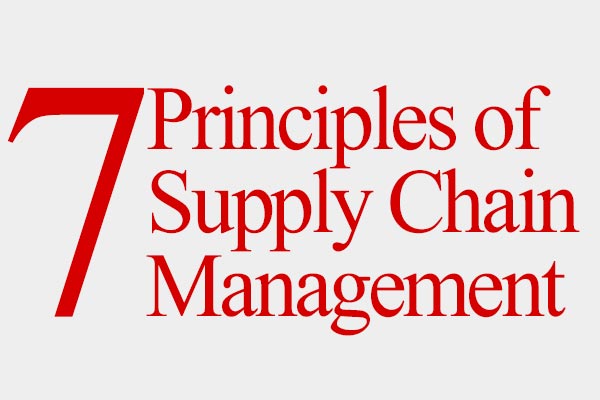Other Voices: 6 environmental factors that affect warehouse barcode label performance
Environmental factors don't have to result in label damage, read errors and lost productivity.
Editor’s Note: The following column by Gregg Schiltz, general manager at ID Label, is part of Modern’s Other Voices column, a series featuring ideas, opinions and insights from end-users, analysts, systems integrators and OEMs. Click here to learn about submitting a column for consideration.
————
Perhaps your DC is preparing for a WMS upgrade. Or you need to replace old rack labels that are damaged, peeling and fading. Or maybe you’ve got a new facility with a looming go-live date.
Barcode labels are a critical component of your inventory management system, but how can you be sure your labels are right for your environment and application? Believe it or not, there are a wide variety of materials, adhesives, laminates and printing technology that go into designing an effective barcode label. It’s critical that a label vendor understands the operational conditions of your warehouse or DC before they recommend and quote on an appropriate solution for your needs.
It’s imperative to answer the following questions to determine your best barcode labeling solution.
1. To what kind of surface will the labels be applied?
A label’s adhesive properties have to match the surface they’re being applied to. A freshly painted steel warehouse beam is going to have different adhesive qualities than a PVC overhead sign or a plastic tote. The wrong construction can lead to peeling, wrinkling or failure. And that can mean the difference between a durable, long-lasting, high-performance label versus one that triggers scan errors and hinders worker productivity.
2. What condition is the racking system in?
Surface preparation is vital when installing warehouse rack labels. Even a new facility requires preparation. Concrete dust is abundant with new rack installations and you want to avoid applying labels to dusty beams.
If you’re relabeling racks that have been in service for a while, they are likely to contain grime, grease and dust and perhaps areas where the paint is scratched or peeling. Without preparation and treatment, labels applied to these conditions are more likely to fail – potentially soon after installation.
What about the old barcode labels? To avoid the time-consuming task of scraping and removing old barcode labels prior to relabeling, we often recommend a cover-up solution.
3. Will your new labels be used inside or outdoors?
Outdoor applications require special consideration. The mix of weather conditions and the sun’s ultraviolet rays can cause untreated labels to quickly fade, deteriorate and peel.
Look for a label vendor that manufactures via advanced digital inkjet technology and uses specialty UV-resistant inks and laminates to protect your barcode labels from harsh exterior temperatures and conditions.
4. Will the labels be used in a cold or freezer environment? At what temperatures will they be applied?
For cooler and freezer applications, effective adhesion is a key concern and top priority. Humidity and frost can cause labels to lose their adhesive values.
It’s important to know if the labels will be installed in a new facility prior to temperature draw down or in an active freezer environment. Some adhesives, for instance, may perform well at -20 degrees but might be recommended for installation at -10F or warmer. For these reasons and others, magnetic labels are often an excellent choice in freezer locations.
5. Are the labels liable to encounter daily bumps and scrapes from forklift trucks and pallet skids?
No matter how careful workers are, warehouse barcode labels will inevitably come in close contact with pallets, lift trucks and other traffic. Scratched and damaged barcodes from poorly manufactured labels can be a real hindrance to productivity. Not only do they have to be replaced more often, but if the label doesn’t scan, the data has to be entered manually. This is time consuming and can lead to costly inventory errors. Look for ultra-durable labels.
6. Will the labels come in contact with harsh cleaning solutions or high temperatures?
In manufacturing facilities, laboratories, electronic component companies and similar environments, conditions can be extreme. Exposure to high temperatures, chemicals, welding spatter and industrial cleaning solutions are not uncommon, so barcode label materials and construction are vital to performance.
There are several options for harsh-environment labeling. For instance, many polyimide (Kapton) labels can withstand sustained temperatures up to 750F and flash temperatures up to 1,000F. They can also withstand harsh thermal and chemical exposures and still provide reliable barcode read rates.
Anodized aluminum barcode tags are also an excellent choice for many harsh-environment applications. They are resistant to abrasions, industrial solvents and extreme temperatures, and feature high-tack adhesives for extreme durability.
Off-the-shelf or poorly designed labels that use the wrong materials and don’t consider your operational environment are likely to be highly ineffective. They may degrade, fade, lose their adhesive values or become damaged. If any of these things happen, you’re going to encounter read errors, lost productivity and wasted expense that adversely impact your operations.
A little knowledge goes a long way. Understanding how your facility’s environment can affect label performance is a smart approach for today’s smart warehouses.












